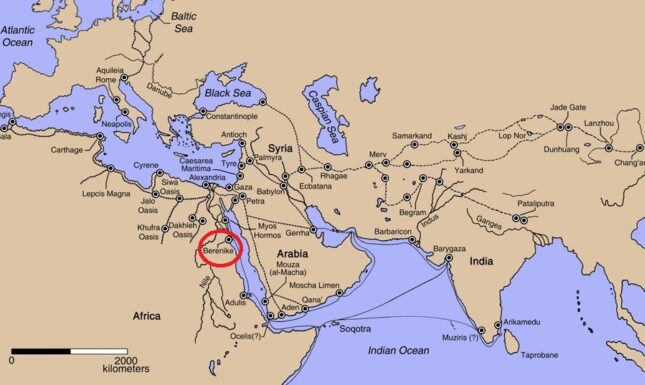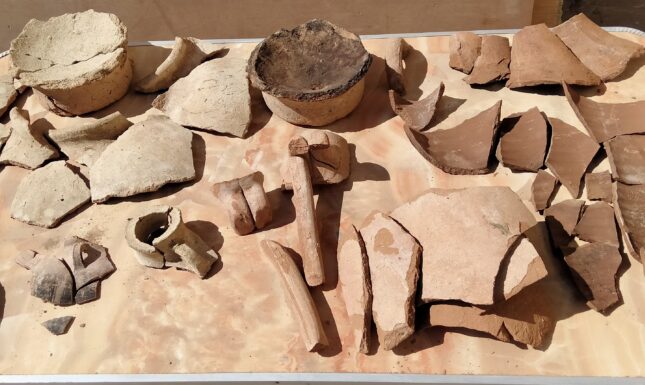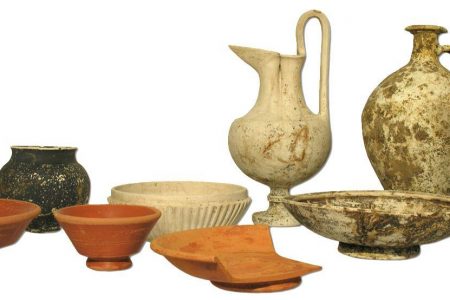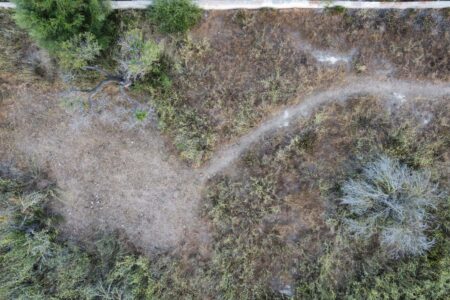From ceramics to connectivity. Berenike and the Indian Ocean Trade
The sheer quantity of ceramics in the Egyptian port site of Berenike makes it possible to explore trade relations and connectivity through the broken pots, as further evidence to support trade routes and other finds pertaining Indian Ocean Trade.
Trade relations
Ceramics are the most ubiquitous group of finds on archaeological sites. It is no surprise that the analysis of these (mostly) broken pots yields a great deal of information. Information that can be inferred from ceramics are related to their intrinsic qualities: way of production, usage, shape but also origin. For sourcing the origin of ceramics the clay and inclusions are most important; morphology and usage are of secondary importance. In past excavation seasons at Berenike, a Greco-Roman port in use from the 3rd century BC until the 6th century AD, over 100,000 sherds from the Isis Temple and other contexts have been analysed and these characteristics have been documented. The sheer quantity of ceramics makes it possible to explore trade relations and connectivity through the broken pots, as further evidence to support trade routes and other finds pertaining Indian Ocean Trade.


Characteristics
Ceramics can be evidence of trade in multiple ways: as personal belongings of the traders, as a commodity themselves or as containers for commodities. It is not always evident for which of these reasons a pot has ended up in Berenike, especially the distinction between personal belongings and commodities is difficult to make. The origin of the ceramics, at the very least, shows that ceramics have crossed the Red Sea or Indian Ocean to arrive at Berenike during the Roman period, the 1st to 6th century AD. This is where the intrinsic characteristics of the ceramics come into play again. These are clear indicators of the non-local origin or in this case an origin outside the borders of the Roman Empire. The morphology indicates which vessels have been used to transport commodities and which were transported for their usage as a vessel. Large storage vessels were used to transport, sometimes unknown, commodities, and plates, cooking pots and other vessels were transported to be traded (as a commodity) themselves.


Trade hubs
The network Berenike partook in stretched from Egypt to Asia, with India as a hub connecting both worlds. Ships from Berenike sailed to India and returned with spices, on those ships ceramics and other objects were stowed in the cargo hold. Other material would be traded or picked up along the route. The ceramics from the excavations at Berenike show a wide range of origins: the Arabian Peninsula coastal areas, Axum, India and the Persian Gulf. These ceramics are both storage vessels used to transport spices, as evidence by and Indian storage vessel with 7.55 kg of black pepper in Berenike, and other commodities. Some vessels, like the cooking wares and plates from Axum and India, show that those were traded or brought in a personal belongings of traders. As more research is being conducted at Berenike and at other sites the connectivity between multiple Indian Ocean emporia becomes clearer and the ceramics and similarities in assemblages show objects and commodities in motion around the Indian Ocean Basin.
The Red Sea port of Berenike has been excavated since the mid 90’s and at present a team from the Universities of Delaware, Heidelberg, Leiden and the PCMA in Warsaw is conducting the research. A volume on the ceramics from the Isis Temple is in preparation by Nicholas Bartos (Stanford University), Jerzy Olesiak (Warsaw University) and the author (Leiden University).






0 Comments